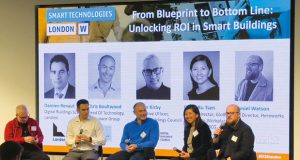 Nicolas Speeckaert, Co-Founder and Director of skeeled, a provider of AI predictive talent acquisition software, on the benefits of virtual recruitment in the ‘hybrid workplace’
Nicolas Speeckaert, Co-Founder and Director of skeeled, a provider of AI predictive talent acquisition software, on the benefits of virtual recruitment in the ‘hybrid workplace’
The UK is forging ahead with its COVID-19 vaccine programme and most businesses and employees are looking forward to a return to some kind of normality over the coming months. But what will this look like and how has the pandemic changed the world of work?
The most noticeable change has been the shift to remote working. With COVID-19 restrictions in place for much of the past year, workers have been forced to work at home, accelerating flexible working trends that were already gaining momentum prior to the pandemic.
This is likely to continue, as many workers don’t want to return to the office full-time. A recent survey from digital workplace firm, Claromentis revealed that after the threat of the pandemic subsides almost three quarters (73 per cent) of UK knowledge workers want a ‘hybrid’ working arrangement, splitting their time between home and the office.
Of the 73 per cent, the average employee wants to work from home for around two thirds (64 per cent) of their working week and spend around a third (36 per cent) of their time working from the office.
Many companies are adopting a ‘hybrid working’ model in response, especially since working at home didn’t seem to have a detrimental effect on productivity. Research from Mercer last year found that 94 per cent of employers said their company productivity was the same (67 per cent) or higher (27 per cent) than before the pandemic.
BP recently announced that its 25,000 global employees will be expected to work from home for two days per week after the pandemic in a permanent shift to flexible working; and Metro Bank has also announced that it is developing a ‘hybrid model’ for its staff.
However, for companies to successfully move to a hybrid working model, they may need to review their processes and the technology they use to ensure business as usual no matter where people are working.
RECRUITMENT GOES DIGITAL
One key area where technology has proved invaluable throughout the pandemic is recruitment. Offices may have been closed and hiring halted to begin with, but many companies soon got to grips with hiring online – interviewing, hiring and onboarding new recruits over Zoom or Teams without ever meeting them in person.
In fact, there are likely now to be several thousand employees who have never met their work colleagues or boss in person, or even been into their office, having been recruited since the start of COVID-19.
The pandemic it seems was the ideal testing ground for virtual recruitment and showed employers that it is possible and effective with the right tools. It’s something that is here to stay, especially given the move to hybrid working.
Last year, recruitment outsourcing company Cielo highlighted that most employers are now comfortable using technology for talent acquisition, with 82 per cent of hiring managers saying they will continue to interview using video once the pandemic is over.
Two fifths (41 per cent) are happy to onboard staff virtually and 32 per cent are not concerned about making job offers without meeting candidates face to face.
Other research in October 2020 by LinkedIn found that 84 per cent of talent professionals in the Europe, Middle East and Africa area (EMEA) and 80 per cent of professionals in the UK believe virtual recruitment is here to stay, even after COVID-19.
The report also says that although video interviewing and remote assessments have always existed, this pandemic has pushed businesses to formulate an end-to-end virtual recruiting process. It has in essence forced businesses into the digital world, something that is likely to bring significant benefits going forward.
THE RISE OF HYBRID RECRUITING
Businesses are adapting to the new normal and we are seeing demand grow for virtual talent acquisition solutions. Now they have seen that virtual recruitment can work more firms will be continuing to use digital tools to conduct parts of the recruitment process, alongside the more traditional face-to-face methods.
Moving part of the recruitment process into the virtual world can remove the resource intensive and costly stages of recruitment when candidates are screened and selected for the first interview. Often it can also benefit candidates who are more relaxed being interviewed from home.
Companies can also identify best-fit candidates in terms of ‘soft skills’ and cultural fit using predictive assessments. These assess the candidates’ personality, cognitive ability and motivation which are proven to be more effective as job performance predictors than past work experience alone.
Candidates are ranked in terms of ability to succeed and to thrive in a position, as well as by their affinity with their future manager. Being able to do this remotely can save companies a lot of time and negate the need to meet people face-to-face in the early stages.
More companies are also introducing digital onboarding programmes using online collaboration tools, supported by adequate documents and materials.
With more people chasing jobs and employers seeing high volumes of applicants for each job role advertised recruiting virtually can be a real advantage. Technology can save companies hours of time and cost and ensure a more fair and objective selection process.
It can also help ensure that the recruitment process works effectively no matter where people are based. With hybrid working likely to become more popular in the future, virtual recruiting is likely to become the norm for many companies too.




